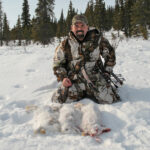Deer urine: A versatile tool in hunting and gardening. Discover the hidden potential of this natural resource, as we explore its uses in attracting deer during hunting season and as an organic fertilizer for your garden. Learn how deer urine can enhance your outdoor experiences and benefit your plants, all while staying environmentally friendly.
Table of Contents
- The Role of Deer Urine in Hunting: A Comprehensive Guide
- Harnessing the Power of Deer Urine: How Hunters Use It to Their Advantage
- Exploring the Benefits of Deer Urine in Attracting and Masking Human Scent
- Understanding the Different Uses of Deer Urine in Hunting Strategies
- The Science Behind Deer Urine: Why Hunters Rely on It for Success
- Maximizing Harvest Success with Deer Urine: A Closer Look at Its Applications
The Role of Deer Urine in Hunting: A Comprehensive Guide
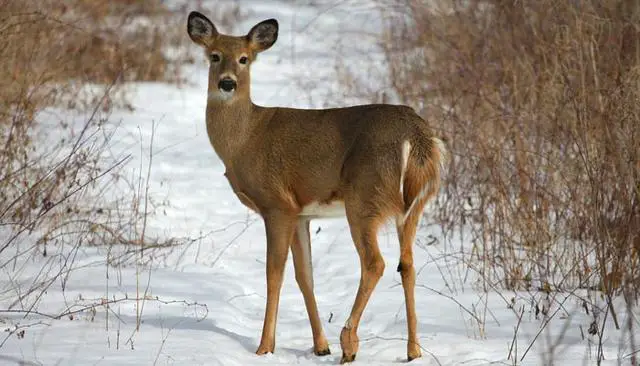
Why Hunters Use Deer Urine
Deer urine is a popular tool used by hunters to attract deer and mask their human scent. This is because a deer’s sense of smell can be up to 1,000 times stronger than that of a human. By using deer urine, hunters can increase their chances of success by enticing deer to come within shooting range.
Types of Deer Urine
There are different types of deer urine that hunters use depending on the breeding season and specific hunting goals. Standard doe urine can be used at almost any time of the year to attract deer. Buck urine is typically used during the breeding season or leading up to it, as it attracts local bucks who may challenge intruding bucks. Doe estrous urine, collected from does ready to breed, is used during the peak of the rut to attract reproduction-focused bucks.
Restrictions on Natural Deer Urine
It’s important to note that natural deer urine products are banned for hunting in some regions due to the potential spread of chronic wasting disease through deer urine. In these areas, synthetic scents are allowed instead. Hunters should familiarize themselves with local regulations before using any type of deer scent.
Other Scents Used by Hunters
In addition to deer urine, some hunters also use scents derived from other animals such as raccoons, foxes, or skunks. These scents are used to further mask their own scent and increase their chances of remaining undetected by deer. Some hunters also utilize scents derived from interdigital glands (on a deer’s hooves) and tarsal glands (on the inside of a deer’s back legs) to simulate deer activity in an area.
Scent Suppression and Cover Scents
Hunters not only use scents to attract deer but also employ strategies to suppress their own human scent. Scent-free clothing made with charcoal liners or antimicrobial fabrics is popular among hunters. Additionally, scent-suppressing sprays, wipes, and ozone-generating machines are used to alter scent molecules and make a human’s smell undetectable by deer. Some hunters also use cover scents that mimic natural smells in the environment, such as trees, acorns, corn, vanilla, or berries.
In conclusion, deer urine plays a significant role in hunting by attracting deer and masking human scent. Hunters have various options when it comes to choosing the right type of urine for different hunting scenarios. It is essential for hunters to be aware of any restrictions on the use of natural deer urine in their region and consider alternative synthetic scents if necessary. Additionally, employing scent suppression techniques and utilizing cover scents can further enhance a hunter’s chances of success in the field.
Harnessing the Power of Deer Urine: How Hunters Use It to Their Advantage
Deer urine is a powerful tool that hunters use to attract and deceive deer. With a deer’s sense of smell being up to 1,000 times stronger than that of a human, using scents derived from deer urine can greatly increase a hunter’s chances of success. Natural deer urine products are collected from farm-raised deer during different reproductive cycles to capture specific scent profiles associated with breeding conditions. These products are typically marketed as attractants or calming scents that entice deer to come within shooting range.
Hunters have various ways of using deer urine in their hunting strategies. They may pour a few drops on their boots, sprinkle it on leaves, drag it on a cloth as they walk, pour it onto the ground, or use saturating aerosols to present the smell of deer near their hunting locations. Different types of deer urine are used depending on the time of year and the behavior of bucks. Standard doe urine can be used almost any time, while buck urine is typically used during the breeding season or leading up to it. Doe estrous urine, collected from does ready to breed, is used during the peak of the rut to attract reproduction-focused bucks.
It’s important to note that natural deer urine products are banned for hunting in some regions due to concerns about chronic wasting disease. In these areas, synthetic scents are allowed instead. Additionally, some hunters also use other animal urines such as raccoon, fox, or skunk urine to further mask their scent. They may also utilize scents derived from deer interdigital glands and tarsal glands for additional deception.
In addition to using deer scents, hunters also invest in scent-elimination products and scent-suppressing clothing to minimize their human odor. Scent-free clothing made with charcoal liners or antimicrobial fabrics is popular among hunters. For those who cannot afford such clothing, there are scent-suppressing sprays or wipes available. Another innovative development in scent suppression is the use of ozone-generating machines that alter scent molecules, making a human’s smell undetectable by deer.
Some hunters prefer to use cover scents to mask their human odor instead of trying to smell like nothing at all. These cover scents come in various forms such as sprays, wafers, sticks, and gels. They provide hunters with the ability to mimic the smells of trees, acorns, corn, vanilla, anise, soil, berries, and other natural scents that may fool a wary deer’s nose.
In conclusion, harnessing the power of deer urine has become an integral part of many hunters’ strategies. By using different types of deer urine and other animal urines, hunters can attract deer and mask their own scent effectively. Combined with scent-elimination products and cover scents, these techniques significantly increase the chances of a successful hunt. However, it’s essential for hunters to be aware of regional regulations regarding the use of natural deer urine due to concerns about chronic wasting disease.
Exploring the Benefits of Deer Urine in Attracting and Masking Human Scent
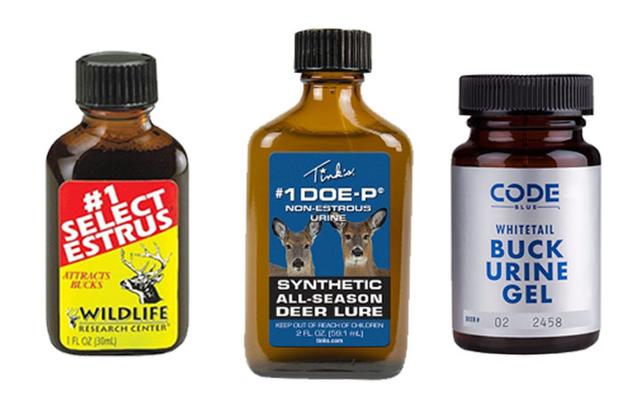
Deer urine has been used for many years by hunters as a tool to attract deer and mask their own human scent. This is because a deer’s sense of smell is incredibly strong, up to 1,000 times stronger than that of a human. By using deer urine, hunters can increase their chances of success in harvesting a deer.
One of the main benefits of using deer urine is its ability to attract deer to a specific area. Hunters can use different types of deer urine depending on the time of year and the breeding cycle of the deer. For example, standard doe urine can be used at almost any time of year to entice both does and bucks to come within shooting range. During the breeding season or leading up to it, hunters may opt for buck urine to attract local bucks to the area. Additionally, doe estrous urine collected from a doe ready to breed can be used during the peak rutting period to attract reproduction-focused bucks.
It is important to note that natural deer urine products are banned for hunting in some regions due to the potential spread of chronic wasting disease. In these areas, synthetic scents are allowed instead. However, some hunters also use other types of animal urine such as raccoons, foxes, or skunks to further mask their scent while hunting.
In addition to using deer urine, hunters also have other options for masking their human scent. Scent-free clothing made with charcoal liners or antimicrobial fabrics is popular among hunters who want to suppress their odor. Alternatively, scent-suppressing sprays or wipes can be used as well. Some hunters even use ozone-generating machines that alter scent molecules and make a human’s smell undetectable by deer.
Overall, using deer urine and other scent-masking techniques can greatly increase a hunter’s chances of success in attracting deer and remaining undetected. These methods allow hunters to smell like the natural environment and reduce the chances of scaring away their target.
Understanding the Different Uses of Deer Urine in Hunting Strategies
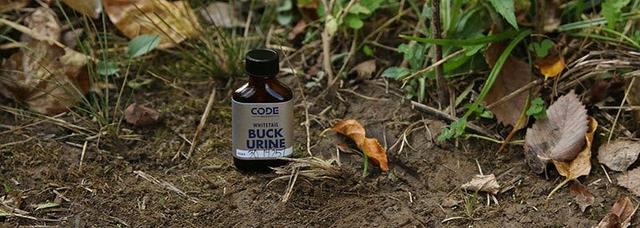
Deer urine is a popular tool used by hunters to attract and mask human scent, increasing their chances of a successful hunt. The strong sense of smell possessed by deer makes these scents effective in luring them within shooting range. Natural deer urine products, derived from both does and bucks, are commonly marketed as attractants or calming scents. These scents are collected from farm-raised deer during different times of the year and reproductive cycles to capture specific scent profiles associated with breeding conditions.
Hunters use standard doe urine throughout the year, applying a few drops on their boots, leaves, or dragging it on a cloth as they walk. They may also pour it onto the ground or use a saturating aerosol to create the smell of deer near their hunting locations. Buck urine is typically used during the breeding season or leading up to it, with the hope that dominant bucks in the area will investigate and try to run off any intruding buck. Doe estrous urine, collected from a doe ready to breed, is used during the peak of the rut to attract reproduction-focused bucks.
It’s important to note that natural deer urine products are banned for hunting in some regions due to concerns about chronic wasting disease spread through deer urine. In these areas, synthetic scents are allowed instead. In addition to deer urine, hunters may also use urine from raccoons, foxes, or skunks to further mask their scent. Some hunters even utilize scents derived from deer interdigital glands (on hooves) and tarsal glands (inside back legs), which simulate deer walking through an area and provide unique scent signatures for communication.
To suppress their own human scent, hunters have various options available. Scent-free clothing made with charcoal liners or antimicrobial fabrics is popular among hunters. For those who can’t afford such clothing, scent-suppressing sprays or wipes are a viable alternative. A newer development in scent suppression is the use of ozone-generating machines, which alter scent molecules and make a human’s smell undetectable by deer. Cover scents are also used by hunters who aim to smell like something else rather than trying to eliminate their scent entirely. These cover scents come in various forms such as sprays, wafers, sticks, gels, and can mimic the smells of trees, acorns, corn, vanilla, anise, soil, berries, and more.
In conclusion, deer urine is a versatile tool in hunting strategies. It is used to attract deer and mask human scent through different types of urine collected from does and bucks during specific breeding conditions. However, it’s important to be aware of regional regulations regarding the use of natural deer urine due to concerns about disease transmission. Hunters also have options for suppressing their own human scent through clothing, sprays/wipes, and innovative technologies like ozone-generating machines. Additionally, cover scents provide hunters with the ability to smell like other natural elements found in the environment.
The Science Behind Deer Urine: Why Hunters Rely on It for Success

Deer urine has long been used by hunters as a tool to attract and deceive deer. The reason behind its effectiveness lies in the powerful sense of smell that deer possess. A deer’s sense of smell is up to 1,000 times stronger than that of a human, making it crucial for hunters to mask their own scent and use attractants that mimic those found in the natural environment.
One of the main uses of deer urine is as an attractant. By using doe urine, hunters can simulate the presence of a female deer in heat, which will entice bucks to investigate and potentially come within shooting range. Similarly, buck urine can be used during the breeding season to imitate the presence of a dominant buck, triggering territorial behavior in other bucks and increasing the chances of a successful hunt.
It’s important to note that different types of deer urine are collected at specific times of the year to capture different scent profiles associated with breeding conditions. This ensures that hunters have access to scents that closely resemble those produced by deer during specific periods, increasing their chances of attracting targeted deer.
However, it’s worth mentioning that natural deer urine products are banned for hunting in some regions due to concerns about spreading chronic wasting disease. In these areas, synthetic scents are allowed as an alternative. Additionally, some hunters also use urine from other animals such as raccoons, foxes, or skunks to further mask their scent and create a more realistic hunting environment.
In addition to using deer urine, hunters also employ other strategies to suppress their human scent. Scent-free clothing made with charcoal liners or antimicrobial fabrics is widely available and helps reduce odor detection. Scent-suppressing sprays or wipes can also be used to attack odors directly. More recently, ozone-generating machines have emerged as a new development in scent suppression, altering scent molecules to make a human’s smell undetectable by deer.
Overall, the use of deer urine and other scents in hunting is based on the understanding of a deer’s powerful sense of smell and their natural behaviors. By using these scents strategically, hunters can increase their chances of success by attracting deer and masking their own presence in the hunting environment.
Maximizing Harvest Success with Deer Urine: A Closer Look at Its Applications
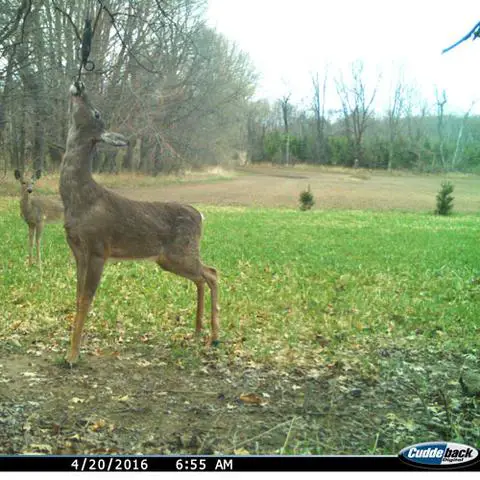
Deer urine is a popular tool used by hunters to attract and mask their scent from deer. With a deer’s sense of smell being up to 1,000 times stronger than that of a human, it’s no wonder that many hunters rely on these scents to increase their chances of success. Natural deer urine products, derived from both does and bucks, are marketed as attractants or calming scents that entice deer to come within shooting range.
Hunters use standard doe urine throughout the year, pouring a few drops on their boots, leaves, or cloth as they walk, or even setting off a saturating aerosol to create the smell of deer near their hunting locations. During the breeding season or leading up to it, hunters opt for buck urine to attract local bucks to the area. By using buck urine, hunters hope that dominant bucks in the area will investigate the scent and try to run off any intruding buck.
Another type of natural urine used by deer hunters is doe estrous urine. This urine is collected from a doe that is ready to breed and is used during the peak of the rut to attract reproduction-focused bucks. However, it’s important to note that natural deer urine products are banned for hunting in some regions due to the potential spread of chronic wasting disease through deer urine.
In addition to using deer scents, some hunters also use urine from raccoons, foxes, or skunks to further mask their scent. They dab a few drops on their boots while walking to their hunting stands in hopes of covering any scent left in their tracks. Other scents derived from deer interdigital glands (on the hooves) and tarsal glands (on the inside of a deer’s back legs) are also used by hunters.
To suppress their human scent, hunters have various options. Scent-free clothing made with charcoal liners or antimicrobial fabrics is a popular choice. For those who can’t afford scent-suppressing clothing, there are sprays or wipes available that attack odors. Another method is the use of ozone-generating machines that alter scent molecules, making a human’s smell undetectable by deer.
Lastly, some hunters use cover scents to smell like something else instead of trying to eliminate their scent altogether. These cover scents come in the form of sprays, wafers, sticks, gels, and other products that provide hunters the ability to smell like trees, acorns, corn, vanilla, anise, soil, berries, and more.
In conclusion, deer urine is a valuable tool for hunters looking to maximize their harvest success. Whether it’s using doe urine at any time of year or specific types of urine during the breeding season, these scents help attract and mask human scent from deer. However, it’s important to be aware of regional regulations regarding the use of natural deer urine products due to the potential spread of diseases. Additionally, hunters have other options such as using cover scents or scent-suppressing clothing to further increase their chances of success in the field.









































